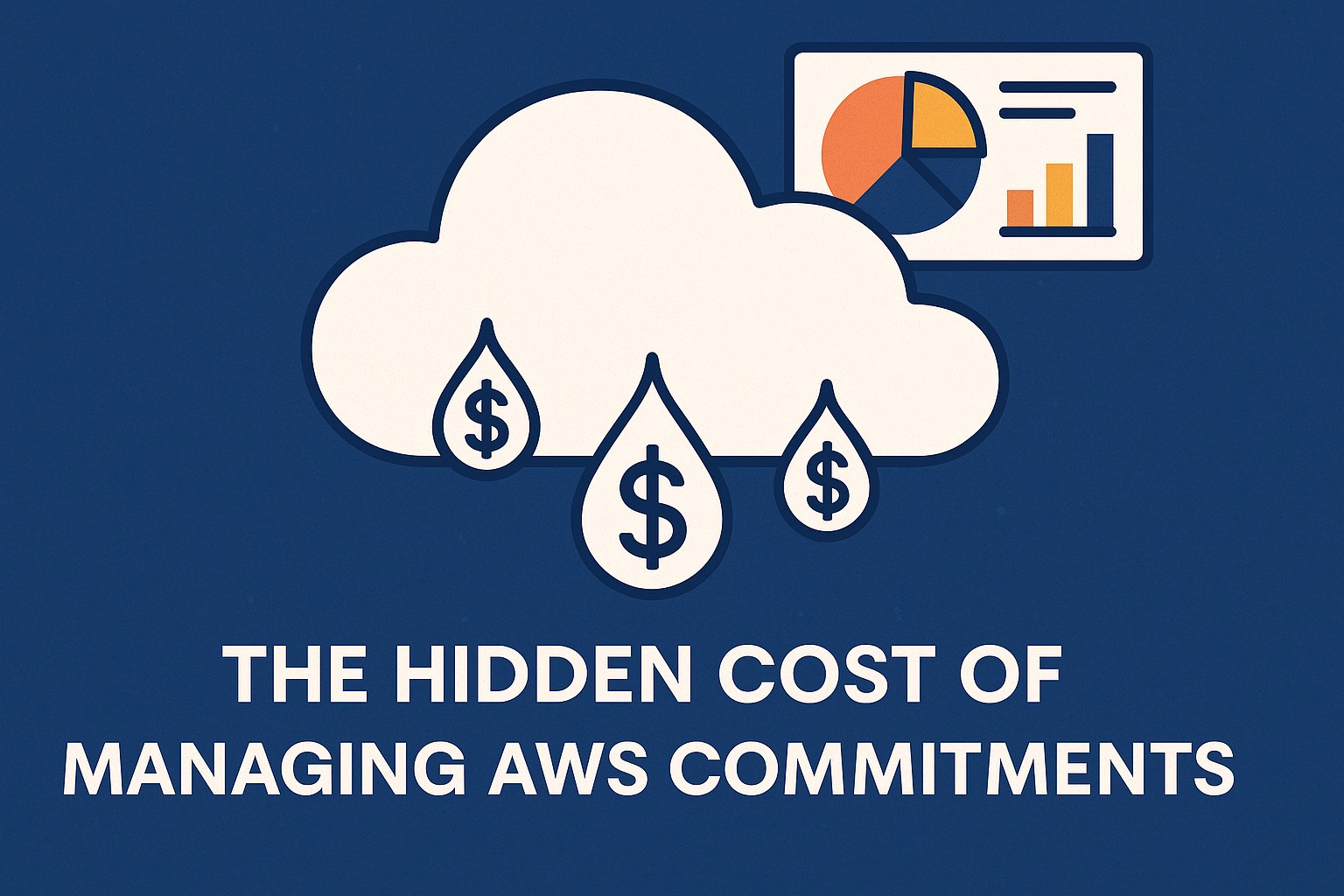In the world of digital-native companies, managing AWS costs isn’t optional — it’s survival. And yet, one of the most overlooked sources of waste and friction lies in how Reserved Instances (RIs) and Savings Plans (SPs) are handled. At Hykell, we often find that companies — even those with a DevOps partner or reseller — are unknowingly leaving 20% or more on the table. Why? Because managing AWS commitments is deceptively hard, and most teams don’t have the time, expertise, or real-time visibility to do it right.
Let’s unpack why this happens, what it’s costing you, and how we’ve helped companies fix it — with zero code changes and no compliance headaches.
Commitment Management: A Technical & Political Minefield
At face value, buying commitments like RIs or Savings Plans sounds simple: pay upfront (or commit for a term), and get discounted rates on compute usage.
In practice, it’s anything but.
Buy too much? You’re stuck with unused discounts.
Buy too little? You’re paying full on-demand rates.
Buy the wrong type? You’re locked into inefficiencies.
Now add internal complexity: FinOps teams, engineering leads, and finance stakeholders often disagree on risk, timeline, and budget control. Just getting sign-off can take weeks — all while your workloads keep running at full price.
The result? A mess of half-deployed discounts, overprovisioned commitments, and missed opportunities.
Real-World Example: “We Already Optimised” — Or Did You?
We recently worked with a European SaaS company spending ~$250K/month on AWS. Their DevOps partner insisted cost optimization was already handled.
We ran our models.
Immediate outcome: 21% discount on their total AWS bill with no code changes.
How? They were using Savings Plans only, leaving a huge chunk of predictable, steady-state EC2 usage without any RI coverage. With automation and smarter commitment blending (our “cocktail” approach), we optimized the mix and sold off unneeded commitments.
This is common — and fixable.
The Opportunity Cost You’re Not Seeing
The biggest hidden cost isn’t just overpaying — it’s wasting time. Teams often spend days or weeks chasing budget owners, debating commitment terms, or manually allocating usage. Meanwhile:
- Your usage patterns evolve
- Your instance types change
- You miss the ideal window to commit or adjust
Every hour spent talking about optimization is an hour not spent doing it. That’s why we advocate automation with guardrails — let the algorithms handle the grunt work, and only intervene when it really matters.
Our Approach: AWS Native First, Automated Always
At Hykell, we manage over $10 million in monthly AWS spend across our EMEA customer base. That gives us rare visibility into the real liquidity of instance types and commitment instruments — and the know-how to act on it.
Here’s how we do it:
- Guardrails First — You define your risk appetite, compliance requirements, and usage preferences.
- Native Tools, Deep Automation — We use AWS-native services wherever possible — the data is already there, and it integrates cleanly into your workflows.
- Blended Strategy — We combine RIs, Savings Plans, and the secondary market as needed. Think of it like crafting a cocktail — no one-size-fits-all.
- Real-Time Adjustments — If your workload changes or usage drops, we act fast — reallocating or exiting commitments before waste adds up.
Why DIY Fails — and How to Fix It
Even the most capable engineering teams struggle to keep up with commitment management. Why?
- It’s not their core job
- They lack visibility across teams
- Commitment decisions are slow, political, and error-prone
Instead of trying to centralize authority or chase buy-in from five stakeholders, you can let automation do 90% of the work — safely, reliably, and in real-time.
Results We See Over and Over Again
- 20–30% cost savings without touching code
- Hours saved per month on commitment planning and reporting
- Less friction between finance and tech teams
- More confidence in budget forecasting
And most importantly: fewer surprises on your AWS bill.
You’re Paying More Than You Should. Let’s Fix That.
If you’re still manually managing AWS commitments — or relying on a partner whose focus isn’t cost — you’re probably overspending.
Let us prove it.
Get in touch, and we’ll run a commitment audit based on your actual usage. Worst case? You get a free sanity check. Best case? You stop overpaying immediately.

